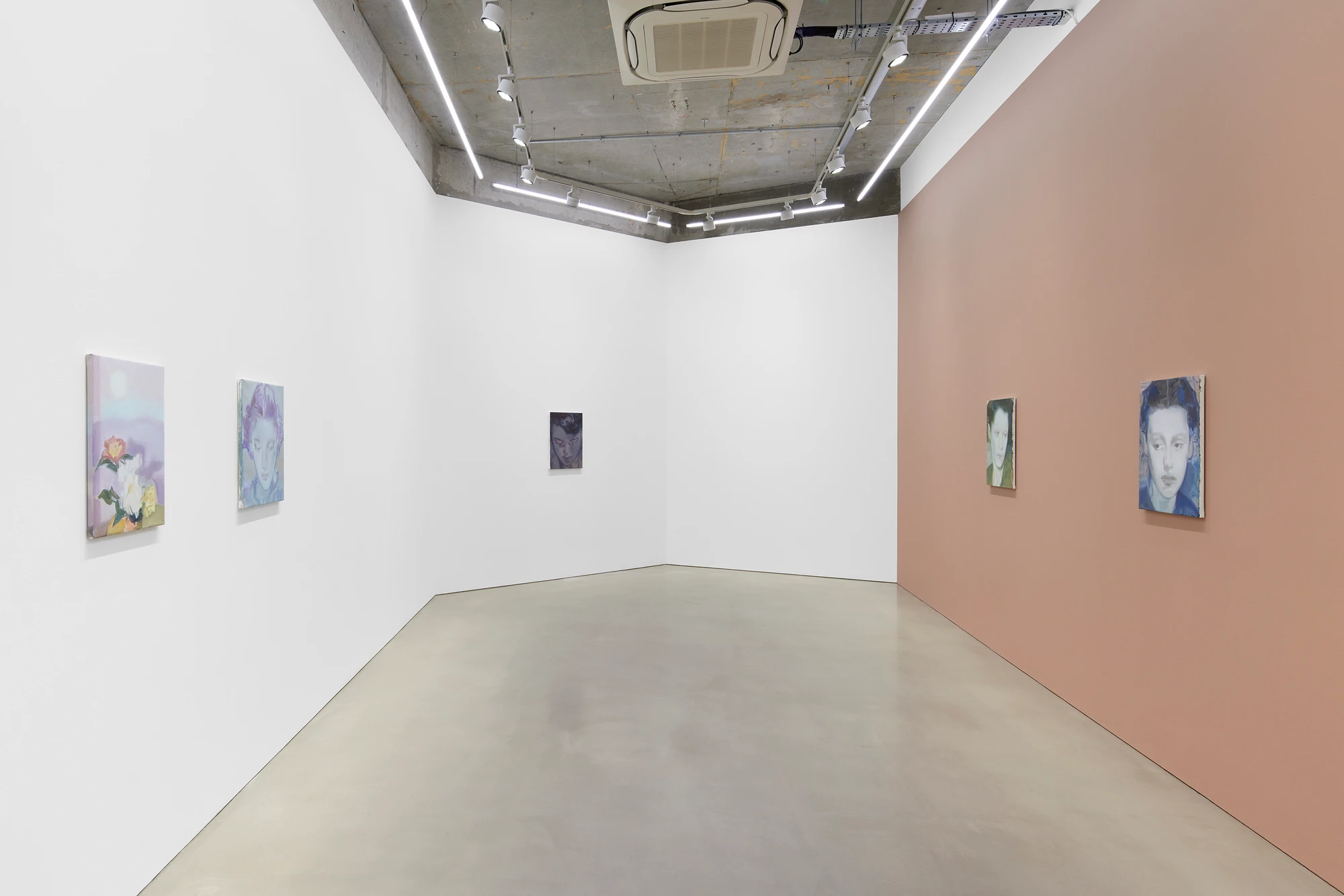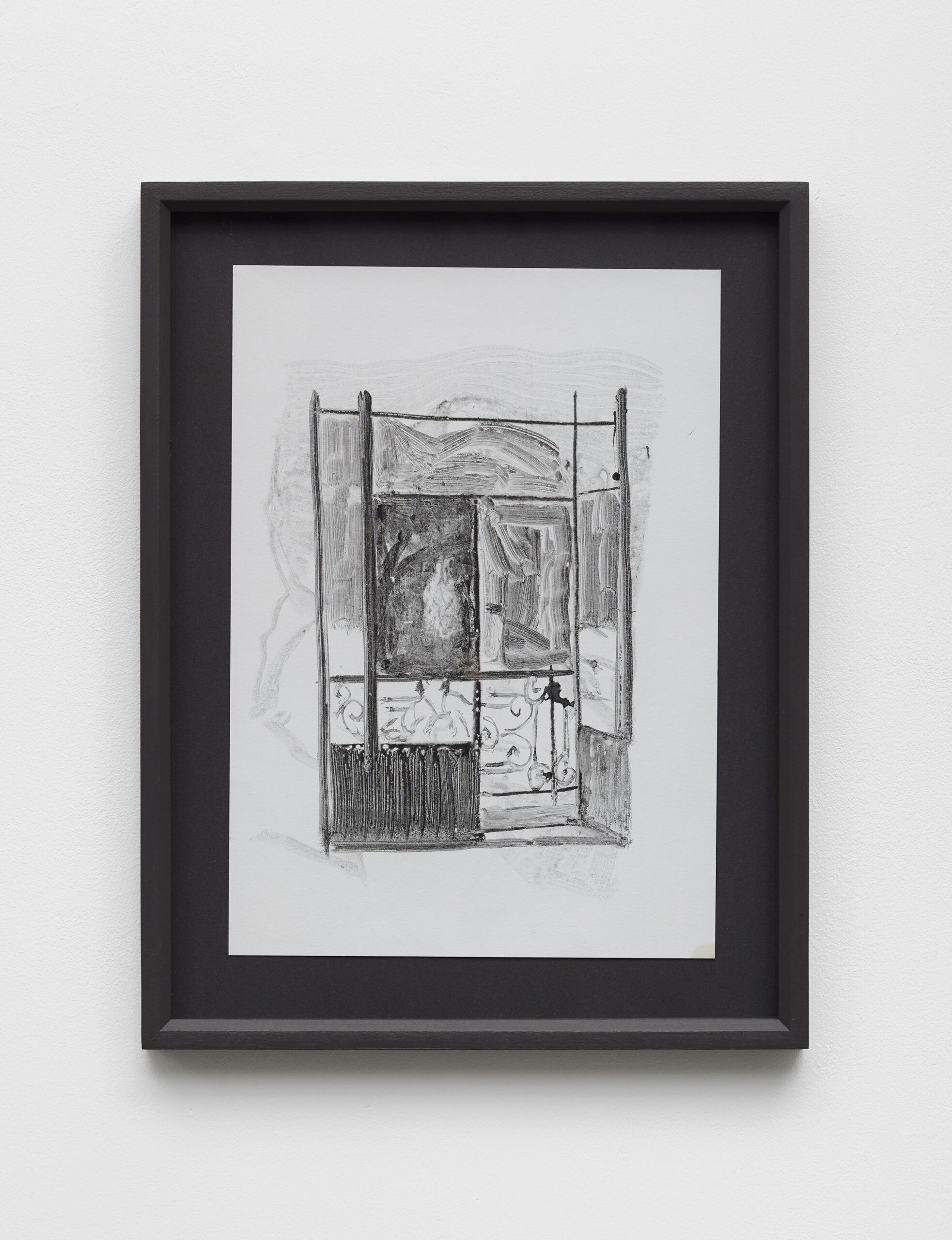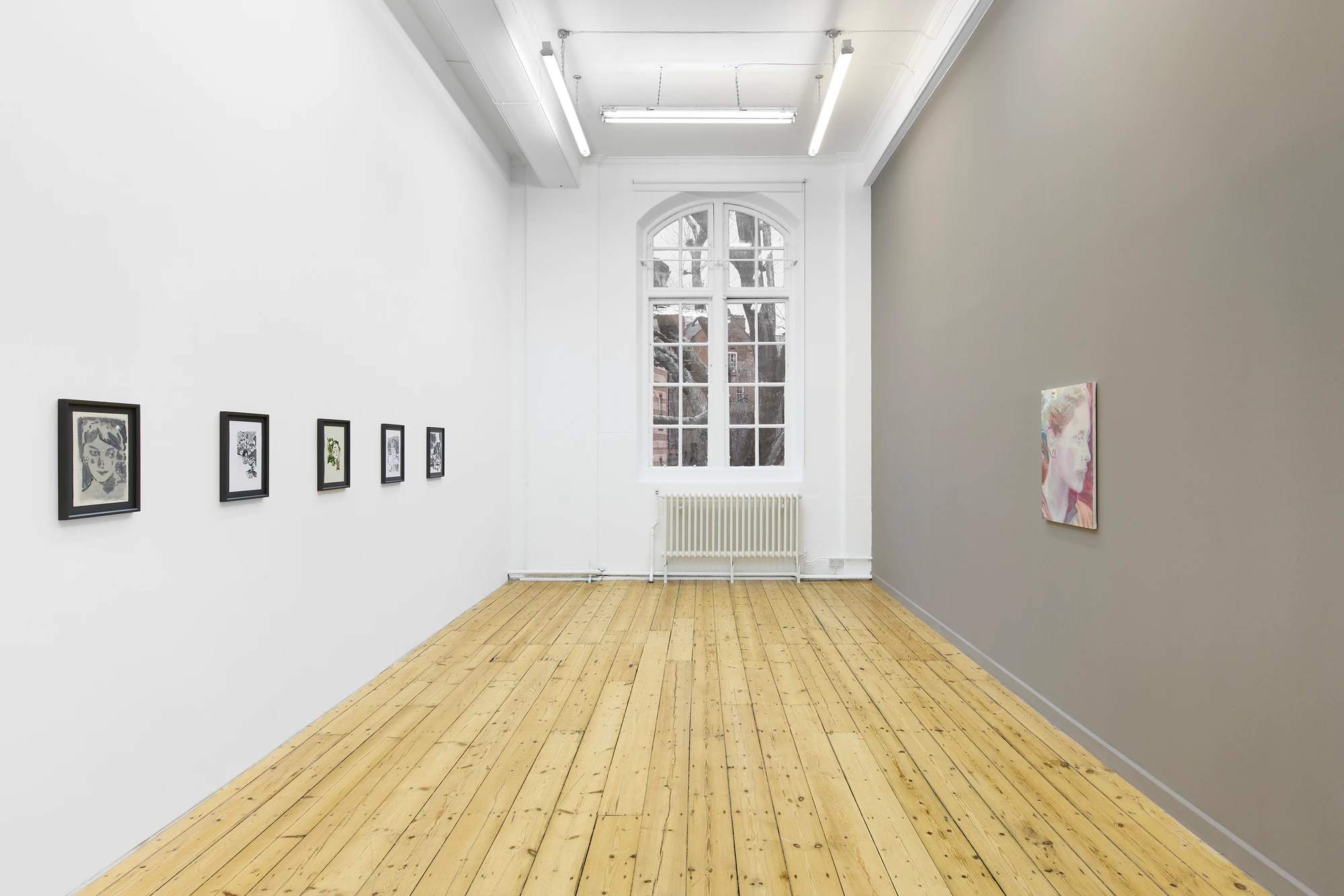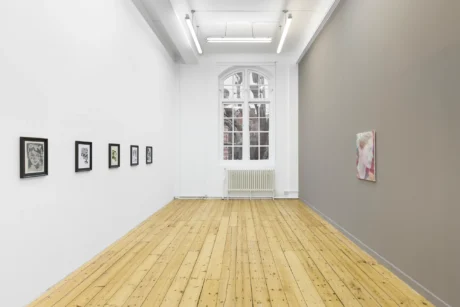There is no space for a narrative to unfold within a Kaye Donachie painting. Her closely-cropped images mostly depict lone faces; sometimes, they might contain a floral arrangement or a foggy landscape, but there is never any suggestion of a story. When the subject is a person, they look neither at the viewer nor at something within the canvas. Instead, they gaze just beyond the edge of the image. Visiting her exhibition at Maureen Paley, I kept the memory for myself. I feel something difficult to put into words— a sort of melancholic nostalgia. It’s a mood that I can’t place explicitly in any single artwork or detail. It is cumulative, coming on from all sides, originating from both everywhere and nowhere.
When I meet her, Donachie is reluctant to describe her works as portraits. Many of the characters who crop up are based on forgotten female figures from art and literature, but she is trying to capture something more elusive than their likeness. “Rather than the translation of one image,” she tells me, “I’m thinking of many images.” Capturing the way a subject looks is one thing, but Donachie’s project is more subtle; her mode of representation is harder to pin down.
She speaks about content, which I take to be defined in relation to form. If form is the physical appearance of a painting, place or person, content is the emotional residue that it leaves behind. If form is what’s said with words, the narrative, content is what’s implied, the subtext. “When I’m painting them, I see it as more of a sensation,” she says, “the content is almost abstract.”

It seems like Donachie’s true subject is almost invisible, which makes it difficult to discuss. I think I understand what we’re talking about, but it’s a necessarily wordless, formless feeling, and I fear that my understanding will shatter under the weight of a concrete definition. Luckily, she comes equipped with a grip of analogies and metaphors. She describes her works as ciphers, what you can see in the image serving as a sort of code for the thing that you can’t see: the content. Paraphrasing Édouard Manet, she explains that everything in a painting “must be active” in service of this code. “How can you make the eye active?”, she asks. I still don’t know what her characters are looking at, but I begin to understand that each vacant gaze, forlorn glance, and sidelong stare is there for a reason, and that it has to do with the untraceable feeling I had when visiting the show.
Manet comes up a few times during our conversation, and a few days later Donachie sends me a book by Georges Bataille on his work. Here, I read about another artist who wanted to paint something beyond his material subject. Bataille describes the physical features of the partygoers depicted in Manet’s Masked Ball at the Opera (1873) as “the byways of profundity.” They are not his destination because, like Donachie, his destination is something that isn’t possible to paint. They are just a means of getting the viewer there. Bataille writes about how Manet’s subjects are routinely “overshot, outdistanced,” just as Donachie tells me that her goal is to “transcend the subject.” Reading Bataille on Manet, Donachie’s project of picturing the invisible becomes legible to me.

Donachie is showing monoprints alongside her paintings for the first time in this exhibition, one of which depicts a doorway opening onto a balcony. Physically — formally — it amounts to no more than a variously-shaded grid with an ornate parapet visible beyond. But it is immediately familiar to me. It is the sum of every memory or hope that I have had of a European weekend away. Paris, Brussels, coffee, reading, smoking. And then there’s another layer that is more difficult to describe — a lingering, slightly tragic sense of nostalgia. It reminds me of That Summer Feeling, a sentimental ballad where Jonathan Richman sings, “that summer feeling is gonna haunt you one day in your life.” This amorphous, wistful feeling isn’t straightforwardly represented within the print, but the marks on the paper all seem to direct me towards it.
Donachie makes her monoprints by painting quickly onto glass and then pressing a sheet of paper onto it, transferring the image in a single layer. They are, in her words, “the compression of a mark on a surface.” Whilst painting is open ended, a monoprint has to be started and finished in the same session. A canvas can be reworked and overpainted over the course of hours, days or years; a monoprint must be started and finished in the same session, transferred onto paper before the image on the glass dries. It’s a process that forces her to be economical, giving her less time and space to make an impression on the viewer. If everything must be active in a painting, it must be doubly active in a monoprint.
This kind of brevity is important in her work. She’s impressed by stories, poems and pictures that are able to convey a feeling with minimal concrete detail, giving the reader just what they need with no additional fluff. In not providing too much information, she says, “you can get a mood really succinctly”. She offers Gabriele Münter’s painting Breakfast of the Birds (1934) as an example. Like her Parisian balcony, it is light on form and heavy on content. We see its subject from behind, her head no more than a brown orb. Beyond her is an anonymous vista, snowy and blue-skied, where a small flock of birds sit on the branches of a tree. The board that it is painted on is visible between Münter’s clipped brushstrokes. What it lacks in detail, it makes up for in the ambiguous, slightly mournful mood that it conveys. The artist eschews a faithful physical depiction of her subject in order to articulate a more universal feeling. As Donachie puts it, “it goes beyond the moment.”

I kept the memory for myself, the title of Donachie’s exhibition, is a quote from Münter. A founding member of Der Blaue Reiter, she was recalling a realisation she had whilst thinking about a landscape that she’d painted years earlier. She saw that the thing she was trying to capture wasn’t as much the landscape itself as the feeling it brought her: one that she discovered could be transposed onto a canvas. She had been able to keep the memory of this feeling for herself, ready to record it in a different way somewhere down the line. Both artists share an interest in how emotion can flitter between mediums: a vista, a painting, a poem, or a print, remaining equally strong as it is obscured from view.
They also, Donachie tells me, share an interest in film, which provides another analogy for the way that they work. “When you leave the cinema, you think about the film in three or four images,” she explains. In our memory, these few impressions become stand-ins for hours of narrative, imagery and emotion— more than the images themselves could possibly contain. So much content is squeezed into them in what you might call a process of distillation. Recalling how the artist makes a monoprint, how she translates a feeling into a quickly-drawn picture on a flat surface, I think of it as a process of compression.

It has been a week since I spoke with Donachie and visited her show. In this time, I have found her ideas about content to be less a particular feature of her work and more a feature of the world that she has made visible. A few years ago, I wrote down a quote from the fictional art critic in Jon Fosse’s novel Septology on what makes a great artist: “they create a new way of seeing that no one had ever known before, and after an artist like that has finished his work the world looks different.” The world looks different to me now.
The idea of art alluding to subjects beyond the canvas is not new, but Donachie’s language to describe it is. Approaching a painting, poem, story or film on her terms brings it a new level of meaning: what feeling, mood or other formless impression is being compressed into what I am experiencing? What memory has its creator kept for themselves and, having carried it with them for a while, deposited here?
I hope I get a chance to visit the exhibition again before it closes. The paintings and prints won’t have changed, but I will, trying not to be smug about it, understand a little better what it is that Donachie’s characters are looking out at.
Written by Phin Jennings
KAYE DONACHIE: I kept the memory for myself is on view at Maureen Paley until 30 March.
find out more





